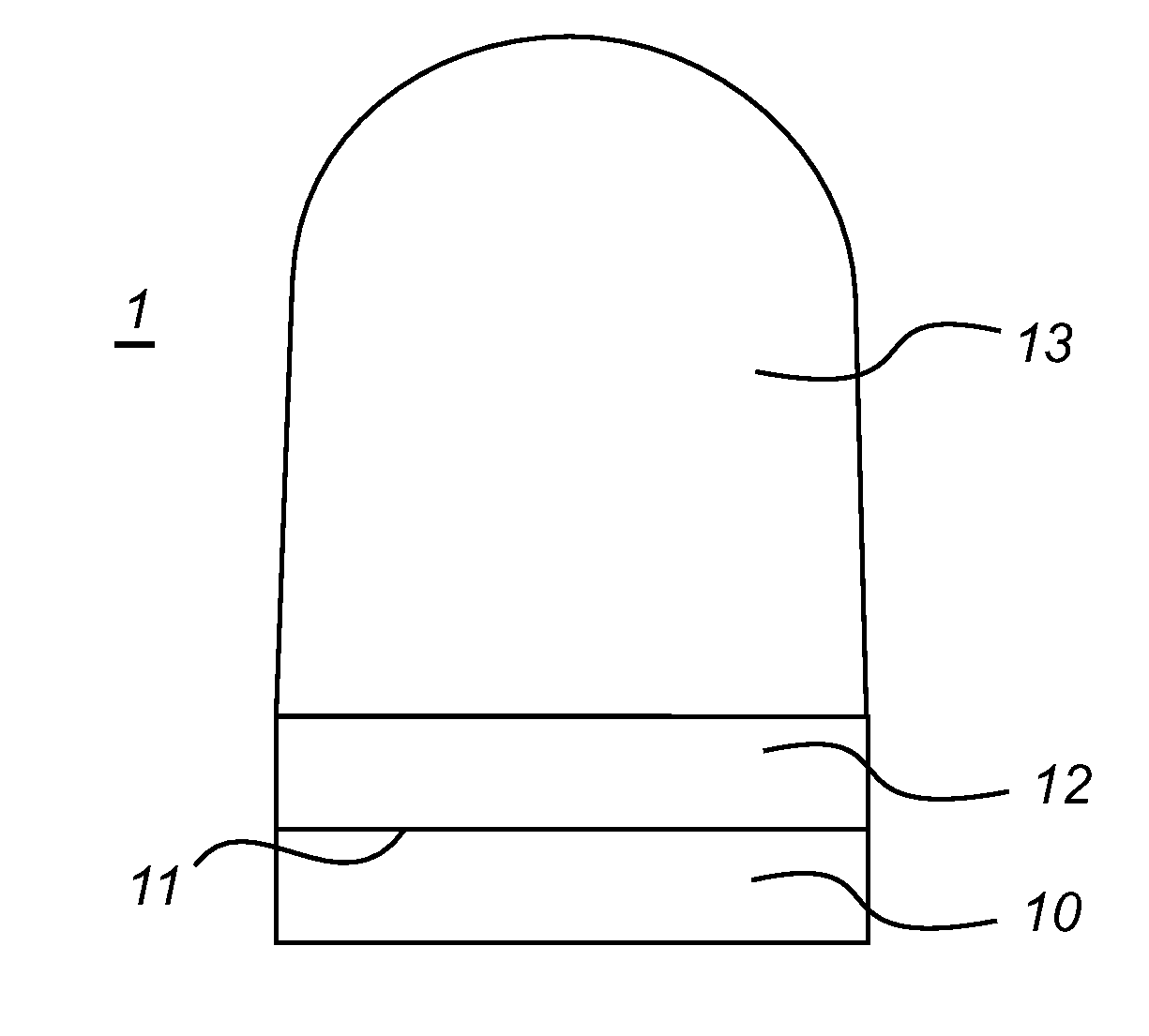Nanoparticle based inorganic bonding material
a bonding material and nanoparticle technology, applied in semiconductor/solid-state device manufacturing, semiconductor devices, electrical equipment, etc., can solve the problems of limited photo-thermal stability, limited power of led-chips, and low light extraction efficiency between chips and optics of packages, and achieve high photo-thermal stability
- Summary
- Abstract
- Description
- Claims
- Application Information
AI Technical Summary
Benefits of technology
Problems solved by technology
Method used
Image
Examples
Embodiment Construction
[0027]FIG. 1 shows a light-emitting device 1 according to an embodiment of the invention. The light-emitting device 1 may for example be used for illumination purposes. It comprises a light emitting diode (LED) chip 10, which is connected to an optical element 13 by means of a bond 12, such that the bond 12 couples the light emitted by the LED chip 10 from a light-emitting surface 11 of the LED chip to the optical element 13.
[0028]The optical element 13 in FIG. 1 is an optical dome for extracting light from the LED-chip. However, the optical element 13 may adopt other forms, for example it may be designed as a plate. The optical element may be of an organic material (for example PMMA), silicone, or of an inorganic material, such as a polycrystalline ceramic material or glass. Preferably, the optical element is of a material that is stable with regards to light of the wavelengths emitted by the underlying LED, and with regards to the temperatures achieved in the device during operati...
PUM
| Property | Measurement | Unit |
|---|---|---|
| mean particle size | aaaaa | aaaaa |
| temperature | aaaaa | aaaaa |
| refractive index | aaaaa | aaaaa |
Abstract
Description
Claims
Application Information
 Login to View More
Login to View More - R&D
- Intellectual Property
- Life Sciences
- Materials
- Tech Scout
- Unparalleled Data Quality
- Higher Quality Content
- 60% Fewer Hallucinations
Browse by: Latest US Patents, China's latest patents, Technical Efficacy Thesaurus, Application Domain, Technology Topic, Popular Technical Reports.
© 2025 PatSnap. All rights reserved.Legal|Privacy policy|Modern Slavery Act Transparency Statement|Sitemap|About US| Contact US: help@patsnap.com


